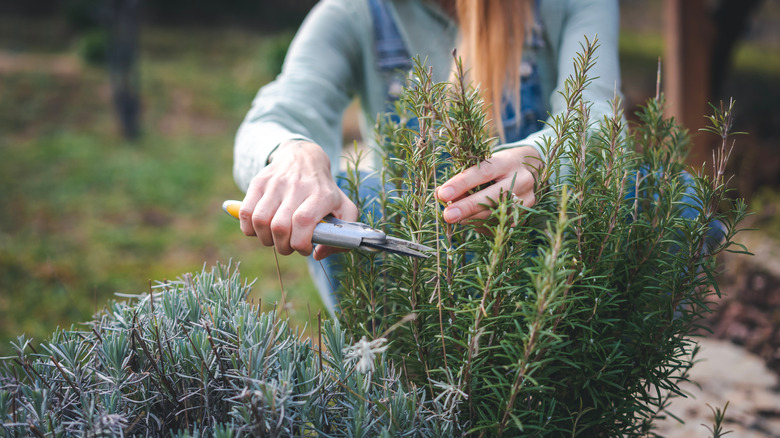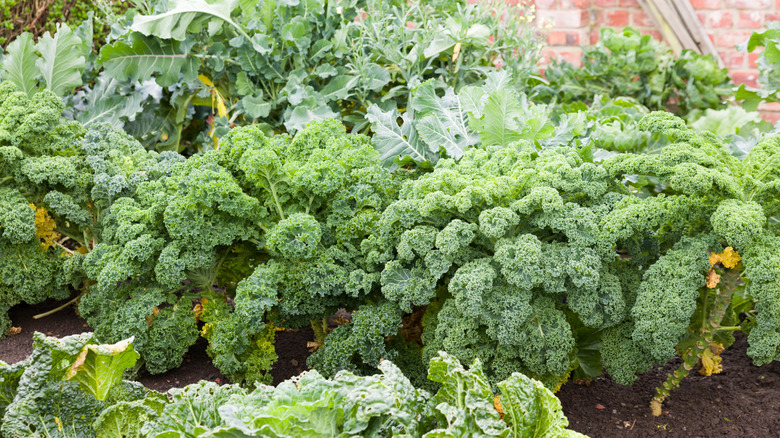The Veggies That Grow Better With Rosemary Nearby
If you're a fan of gardening, you've probably heard about the concept of companion plants. These are plants that grow well together and typically offer some type of protection or other advantage to one another. Companion planting benefits your garden, potentially resulting in better yields and less pest damage. Rosemary (Salvia rosmarinus) is notably prized as a companion plant to veggies in the brassica family, including cabbage, kale, and broccoli.
While rosemary is only perennial in zones 8 through 10, you can treat it as an annual, growing a new plant each year. This approach has the advantage of keeping the rosemary plant relatively small, so it won't start to accidentally shade out other plants. People generally enjoy the fragrance, but that's not the case for many animals. For example, rosemary is rarely bothered by deer or insects, thanks to the intense smell of its leaves. That said, pollinators love the plant's flowers. Rosemary is perfect for growing near your cabbage and other cole crops because it repels cabbage flies, white flies, and aphids, which can otherwise decimate these plants. Some people also believe that rosemary may mask the scents of vegetables that would otherwise be devoured by pests.
Growing brassicas and rosemary together
Rosemary thrives in a range of soil conditions, meaning it can easily grow alongside brassicas, which grow best in well-draining and fertile soil. While rosemary is relatively drought tolerant once established, it can also thrive in the moist soil that brassicas love. Both brassicas and rosemary also flourish in acidic soils. Be sure to plant your rosemary in a full sun location. Brassicas often benefit from spots that offer a small amount of shade, as too much sun and heat can cause them to bolt quickly, so you may need to use a shade cloth or build a sun map of your yard to find a spot where both plants can flourish in close proximity to each other. In warmer zones, you may be able to grow vegetables in the shade of your perennial rosemary plants, which can reach heights of 5 feet.
The ideal time to plant your rosemary is in the spring, which is also the time for transplanting brassicas. Brassicas are frost tolerant, so as long as you harden them off properly, you shouldn't have to wait until after your last frost to put them into the garden. On the other hand, it's best to transplant rosemary a little bit later, once frosts no longer present a threat. Of course, rosemary isn't the only plant that grows well with brassicas. You can also grow these crops next to onions, peppermint, and beets.

